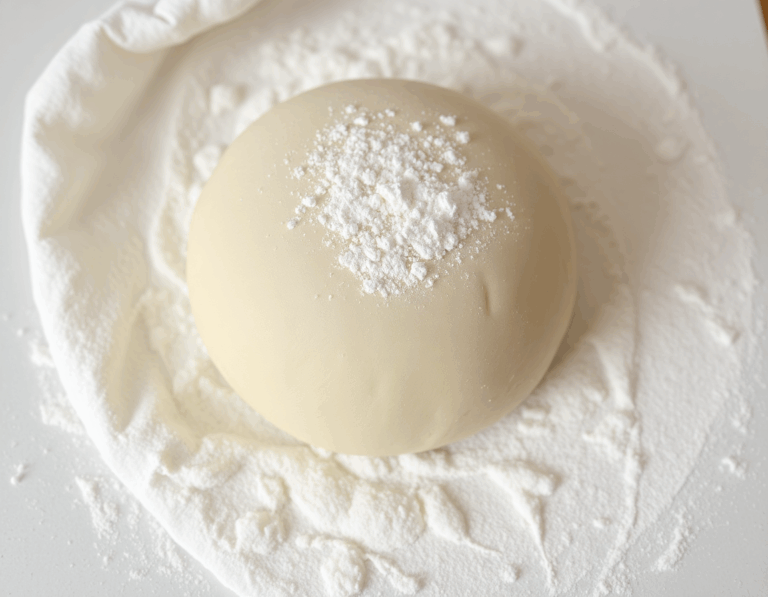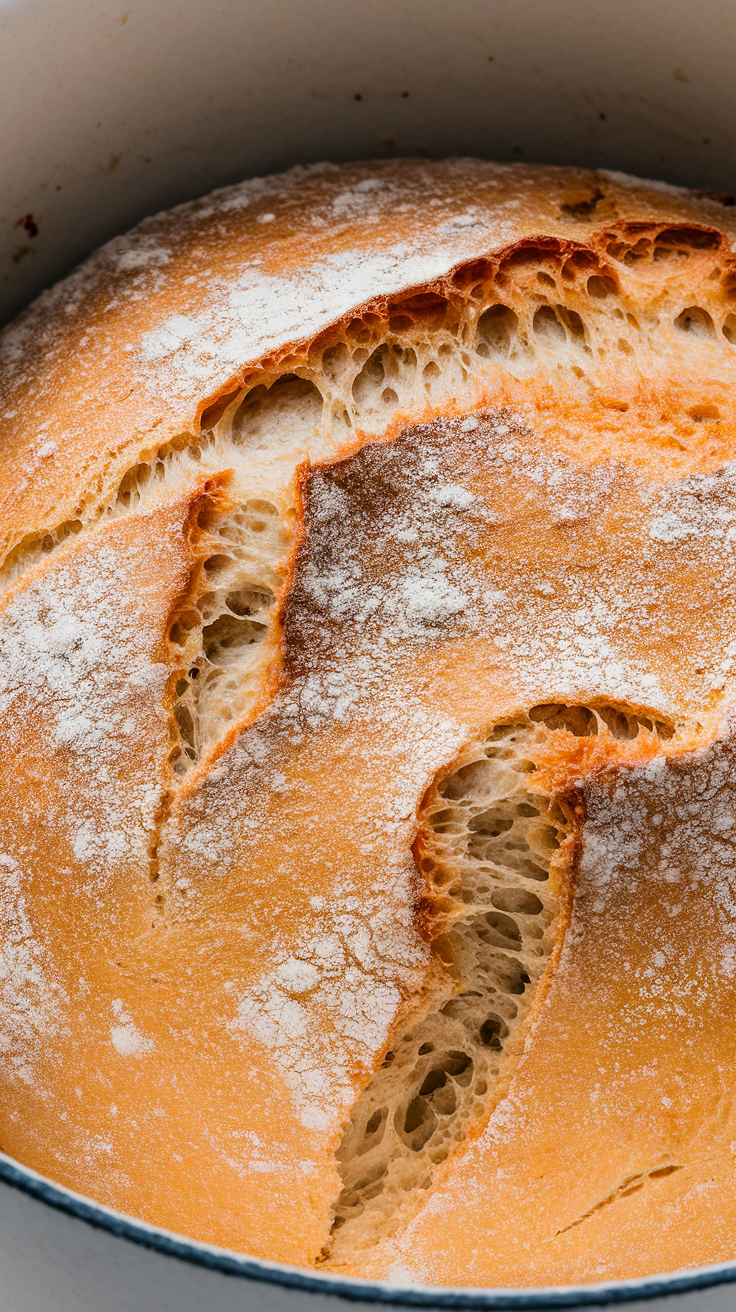Wow, bread! Who knew something so basic could be such a game-changer?
This no-knead bread is like magic—minimal effort, maximum reward. Imagine the aroma of freshly baked bread wafting through your kitchen on a lazy Sunday morning.
You won’t believe how easy it is, and the crust? Oh, it’s like a crunchy hug for your taste buds.
Steps
- In a large bowl, mix the flour, yeast, and salt. Pour in 1½ cups of water and stir until the mixture becomes a shaggy, sticky dough. Cover the bowl with plastic wrap and let it rest in a warm room (around 70 degrees) for at least 12 hours, ideally 18 hours.
- Check the dough to see if it’s ready; it should have bubbles on the surface. Lightly flour a work surface, place the dough on it, and sprinkle it with a bit more flour. Fold the dough over itself once or twice, then cover it loosely with plastic wrap and let it rest for 15 minutes.
- Shape the dough into a ball, using just enough flour to prevent sticking. Generously coat a cotton towel with flour, wheat bran, or cornmeal, place the dough seam side down on the towel, and dust the top with more flour, bran, or cornmeal. Cover with another cotton towel and let it rise for about 2 hours, until it has doubled in size and doesn’t spring back when poked.
- Preheat the oven to 450 degrees at least 30 minutes before you plan to bake. Place a heavy covered pot (6- to 8-quart size) in the oven as it heats. Once the dough is ready, remove the pot from the oven, and carefully turn the dough into it, seam side up.
- If the dough is unevenly distributed, give the pot a shake to even it out. Cover with the lid and bake for 30 minutes. Then, remove the lid and bake for an additional 15 to 30 minutes until the loaf is beautifully browned. Cool the bread on a rack before slicing.

Ingredients
- knead bread recipe:
- 3? cups (430 grams) all-purpose or bread flour, plus additional for dusting
- Generous ¼ teaspoon (1 gram) instant yeast
- 2 teaspoons (8 grams) kosher salt
- 1½ cups (345 grams) water
- Cornmeal or wheat bran, as needed for dusting
FAQ
- What makes this no-knead bread recipe so popular?
- This recipe is favored for its simplicity and minimal effort. It requires no kneading, special ingredients, or complex techniques. The magic lies in the long fermentation period, which helps develop the dough’s flavor and texture.
- Can the type of flour in the recipe be changed to semolina or sourdough flour?
- Switching to semolina or sourdough flour might require adjustments to the recipe. Different flours absorb water differently and can affect the dough’s texture and rise, so some experimentation may be necessary.
- How can I prevent the bread from sticking to the pot during baking?
- Many people find using parchment paper helpful in preventing sticking. Simply lower the parchment paper with the dough into the hot pot before baking, ensuring a smooth transfer and easy cleanup.
- What alternatives exist for proofing the dough in a warm environment if my house is cold?
- If your house is chilly, you can leave the dough to ferment for up to 24 hours to ensure proper bubbling and rising. Alternatively, using the oven light or a warm spot in your kitchen can help maintain the necessary temperature.
- How can I add more flavor to this bread recipe?
- Increasing the salt to about 14-16 grams can enhance the bread’s flavor. You can also experiment by folding in ingredients like fresh grated cheddar and chopped jalapenos for a flavorful twist that has been well-received by many.
Tips
- Use parchment paper instead of towels to prevent the dough from sticking or burning when transferring it to the hot pot.
- Consider measuring all ingredients with a food scale for precise and consistent results.
- Experiment by adding ingredients like fresh grated sharp cheddar and chopped jalapeños for a flavorful twist on the classic loaf.
- If your kitchen is on the cooler side, allow the dough to rest for a full 24 hours to ensure it develops the ideal bubbly texture and results in a lighter bread.
Equipment
- Knead Bread recipe, here is a list of main equipment you might need to purchase from Amazon if you don’t already have them at home:
- 6- to 8-quart heavy covered pot: This can be a cast iron, enamel, Pyrex, or ceramic pot. A Dutch oven would be ideal.
- Kitchen scale: For accurately measuring ingredients, especially if you prefer precision over using cups.

